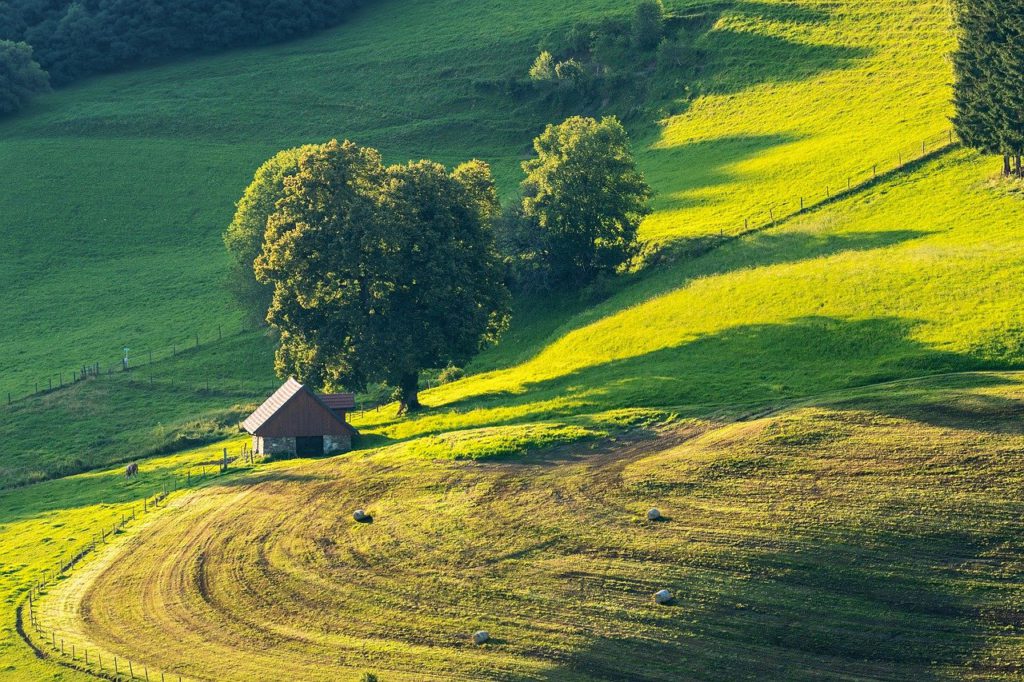Wire tree guards create a protective barrier around young saplings, deterring pests and accidental damage. Professional gutter guard installation ensures water flows freely off the roof, keeping foundations and beds dry. Incorporating weathering steel garden edging gives planting zones a refined, long-lasting frame that matures beautifully. These complementary solutions work together to defend your landscape from the elements and everyday wear.
Safeguarding Young Trees
Young trees are especially vulnerable to nibbling animals, mower strikes, and trampling. By slipping a sturdy mesh collar around each trunk, you establish a safe buffer that lets bark recover and foliage flourish. These metal guards breathe easily, avoiding moisture buildup while remaining rigid enough to withstand knocks and scrapes. Place them early in spring, before sap flow begins, and adjust the height annually to match trunk growth. Properly installed, they let your trees mature unimpeded by lawn equipment or curious wildlife.
Streamlining Water Management
Leaves, twigs, and debris can quickly clog open gutters, leading to overflow that erodes soil and damages hardscapes. Seamless shield systems cover roof edges with fine-mesh screens that divert rainwater while blocking detritus. The result is consistent drainage, reduced cleaning frequency, and less risk of water-related plant stress. During heavy downpours, you’ll notice fewer puddles around foundation plantings. Beyond convenience, keeping channels clear prolongs the life of fascia boards and prevents costly repairs caused by trapped moisture.
Embracing Weathered Steel for Durable Edging
Choosing steel with a natural rust finish brings both form and function to garden borders. Its warm hue complements foliage while providing a rigid outline that contains gravel, bark, or soil. This material forms its own protective patina over time, resisting corrosion and anchoring beds against rain-driven washouts. Edging profiles—whether low-rise strips or taller partitions—offer versatility: define pathways, separate lawn from beds, or fashion raised troughs for herb gardens. Once set, these panels require no repainting or replacement for decades.

Choosing the Right Materials
Not all metal products perform equally in outdoor settings. When selecting mesh guards or edging panels, look for alloys formulated to resist corrosion. Galvanized coatings extend service life, especially in coastal or high-humidity climates. For drainage covers, stainless steel screens stand up to algae growth and won’t warp under sunlight. Seek products tested for load strength and UV stability: these specs ensure components won’t bend under pressure or become brittle over time. Investing in quality upfront pays dividends in reliability and appearance.
Installation Insights
Accurate placement is key to long-term performance. For tree collars, dig shallow trenches around the base to anchor the lower edge, preventing animals from slipping underneath. When fitting debris screens, angle the mesh upward slightly so leaves slide off naturally. With steel borders, drive stakes every 60–80 cm and hammer panels until the top edge aligns with your design height—too deep, and edging may corrode; too shallow, and soil can spill over. Simple leveling tools and careful planning lead to clean lines and trouble-free operation.
Maintenance Strategies
Although these protections minimize upkeep, periodic checks will keep everything in prime condition. Once or twice a year, sweep gutters of any residual debris that accumulated on the screens. Inspect tree collars for trapped moisture or insect nests; loosen straps or ties if the trunk appears constricted. Wipe down edging panels after winter to remove salt residue or mud splatters. If you notice any warping or loosening stakes, realign and re-secure immediately. Small interventions now prevent major repairs later.
Design Harmony
Well-chosen protective elements can enhance your landscape’s aesthetic coherence. Match the finish of collars and screens to hardware on garden structures—latches, hinges, or pergola brackets—to unify the palette. Use edging profiles to reinforce lines established by hedges or pathways, subtly guiding sightlines. Group trees of similar size and coordinate their guards for visual rhythm. When transitions between grass, gravel, and mulch are crisp, the entire scheme reads as intentional, polished, and thoughtfully curated.
Environmental and Aesthetic Benefits
Beyond protection, these installations contribute to ecological health and sensory appeal. Solid tree barriers encourage wildlife to browse at a safe distance, preserving bark without discouraging beneficial insects and birds. Clear gutters ensure roof runoff doesn’t erode soil around native plantings or flood rain gardens. Weathered steel panels develop a living patina that responds to light and weather, adding dynamic shifts in tone throughout the seasons. Collectively, they let your garden function naturally while maintaining an orderly, artful presentation.
Cost and Return on Investment
While professional-grade mesh collars, screening systems, and steel edging have higher initial costs than plastic or untreated metals, their longevity makes them cost-effective. Plastic guards crack and fade; untreated steel rusts through, leading to replacements every few years. In contrast, quality metal solutions last decades with minimal care. When factoring in reduced labor—fewer gutter cleanings, less landscape regrading, and lower tree-replacement rates—your upfront investment typically pays for itself within a handful of seasons.
Conclusion
A resilient, attractive landscape starts with safeguarding its core components. By equipping trees with sturdy protective collars, securing rooflines with effective shields, and defining beds with enduring steel borders, you set the foundation for a garden that thrives through every season. Thoughtful selection of corrosion-resistant materials and proper installation ensure these systems work unobtrusively, blending into the landscape rather than detracting from its beauty. With routine inspections and minor upkeep, you’ll enjoy the peace of mind that comes from knowing your outdoor sanctuary is built to last.



